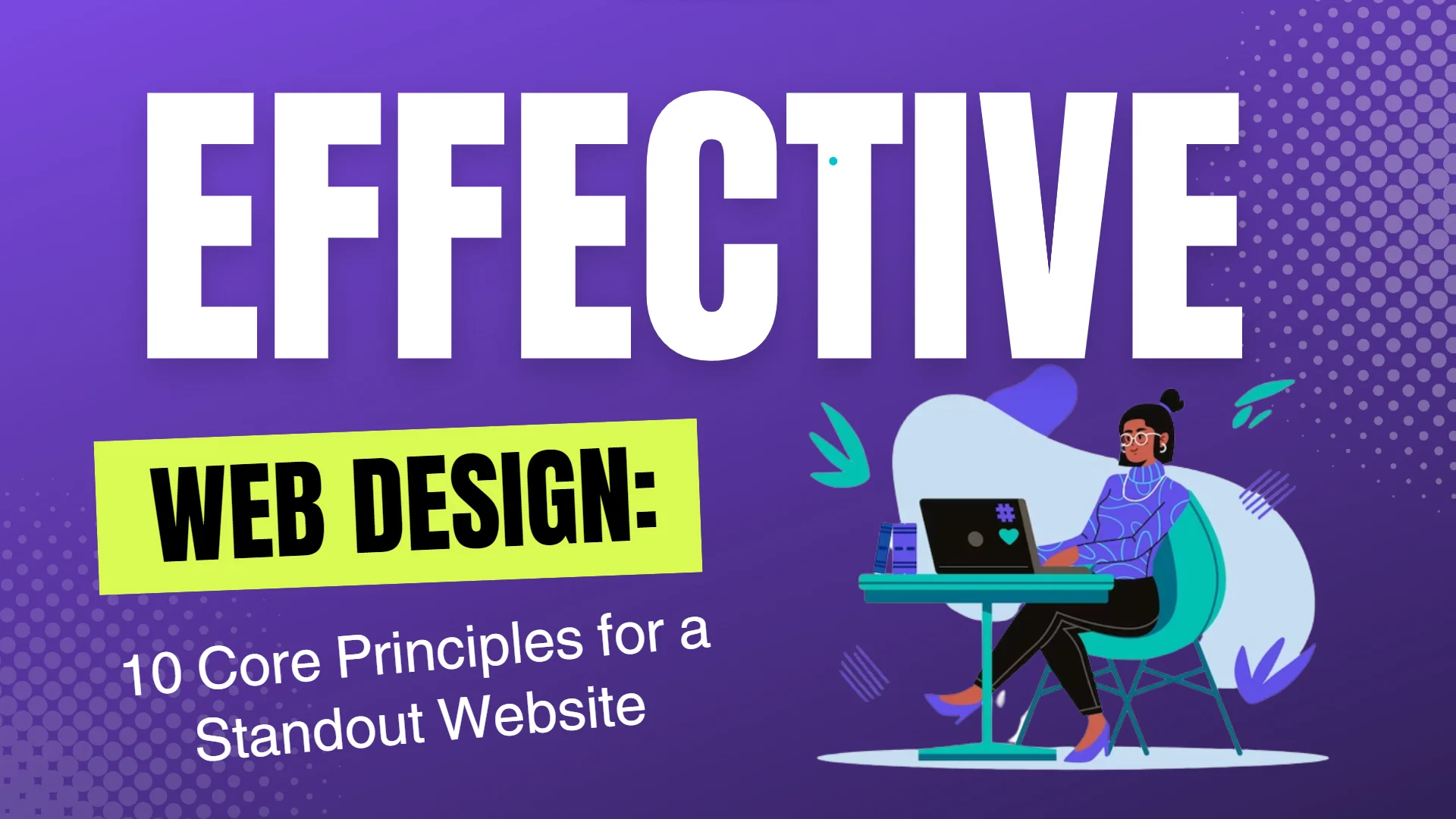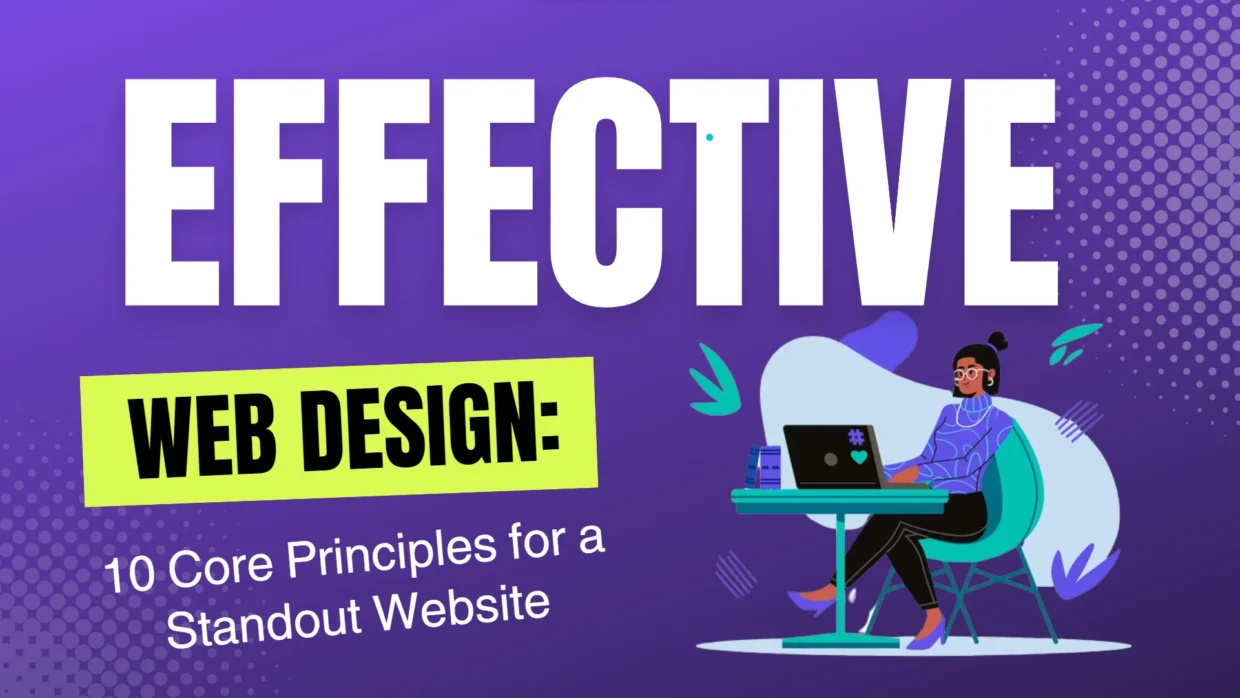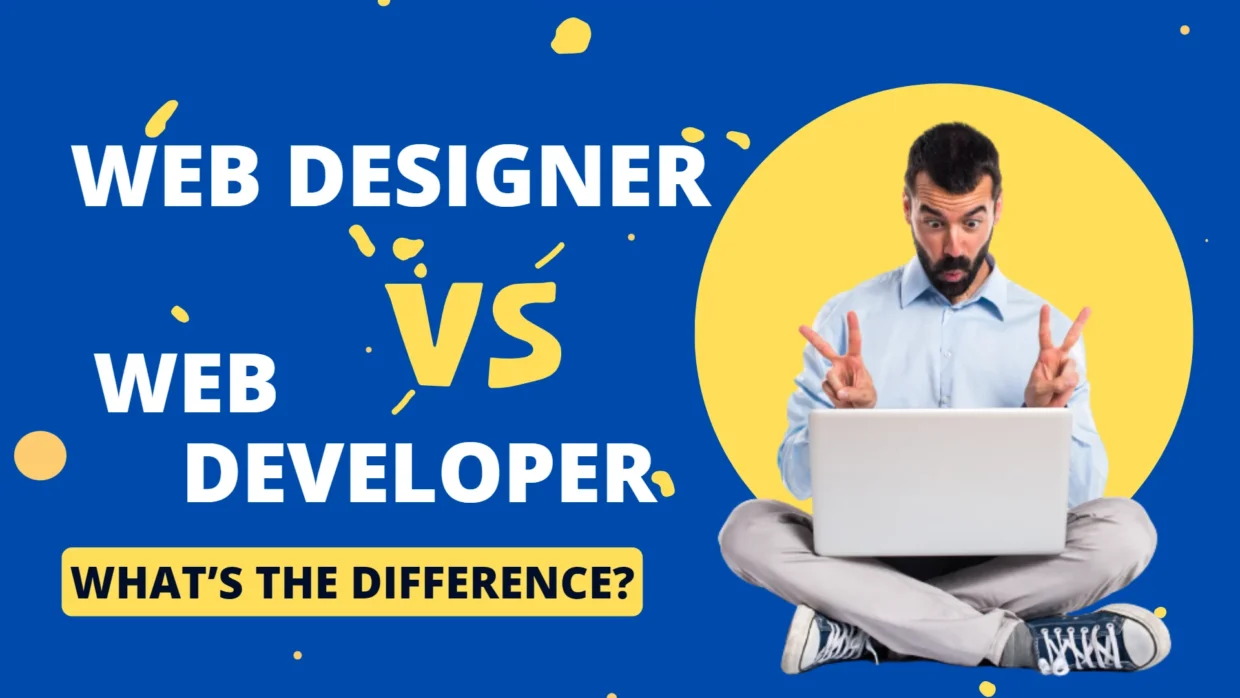
In today’s digital era, a visually appealing and user-friendly website is crucial for any business or organization. Effective web design goes beyond aesthetics; it focuses on creating an engaging and intuitive user experience. By implementing the following 10 core principles of web design, you can craft a website that leaves a lasting impression and drives success.
1. Purposeful Design:
Every element of your website should serve a purpose. From the layout to the color palette and typography, each decision should align with your brand identity and goals. Purposeful design ensures that your website communicates your message effectively and resonates with your target audience.
2. User-Centered Approach:
Put your users first. Understand their needs, preferences, and behaviors through user research and feedback. By designing with the user in mind, you can create an experience that meets their expectations and facilitates their goals. Consider user personas and tailor your design to deliver a seamless experience.

3. Simplicity:
Simplicity is the hallmark of effective web design. Keep your design clean, uncluttered, and focused. Embrace whitespace to provide breathing room for elements and enhance readability. Clear and concise content ensures that visitors can quickly understand your message and navigate your site effortlessly.
4. Visual Hierarchy:
Guide your visitors’ attention through a well-structured visual hierarchy. Use size, color, contrast, and spacing strategically to emphasize key elements and lead users through your content. By establishing a clear hierarchy, you make it easier for users to digest information and take desired actions.
5. Consistency:
Consistency is key for a polished and professional website. Maintain consistency in your design elements such as colors, typography, button styles, and layouts across all pages. Consistency creates a sense of familiarity and helps users navigate your website seamlessly, fostering trust and enhancing the overall user experience.
6. Responsive Design:
In the mobile-driven world we live in, responsive design is a necessity. Ensure that your website adapts seamlessly to different screen sizes and devices. Responsive design guarantees a consistent experience, regardless of whether users access your website from a desktop, laptop, tablet, or smartphone.
7. Clear Navigation:
Intuitive navigation is essential for a user-friendly website. Create clear and straightforward navigation menus, use descriptive labels, and organize content logically. Visitors should be able to find what they’re looking for effortlessly, reducing frustration and improving engagement.
8. Readability:
Optimize your website’s readability to keep visitors engaged. Choose legible fonts, appropriate font sizes, and sufficient line spacing. Pay attention to contrast between text and background to ensure easy reading. Well-presented content enhances comprehension and encourages users to stay longer on your site.
9. Fast Loading Speed:
A slow-loading website can lead to high bounce rates and frustrated visitors. Optimize your website’s performance by compressing images, minifying code, and leveraging caching techniques. Prioritize fast loading times to provide a smooth and enjoyable user experience.

10. Accessibility:
Design your website to be accessible to all users, including those with disabilities. Follow established accessibility guidelines, such as WCAG 2.1, to ensure that your website is perceivable, operable, understandable, and robust for everyone. Making your website accessible demonstrates inclusivity and broadens your potential audience.
Conclusion:
By embracing these 10 core principles of effective web design, you can create a standout website that captivates your audience and achieves your goals. Remember, web design is an ongoing process, so continually gather user feedback, analyze metrics, and adapt your design to evolving trends. By combining purposeful design, a user-centered approach, and seamless functionality, you can create a website that not only looks visually stunning but also delivers an exceptional user experience.



